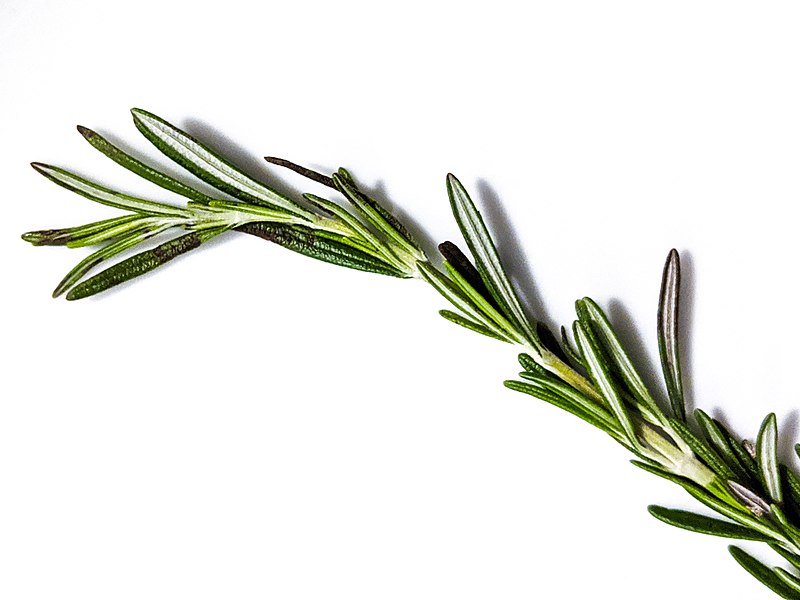While many of us first learned of hot cross buns through the nursery rhyme, "One a penny, two a penny, hot cross buns," hot cross buns actually are associated with the Easter season, specifically Good Friday. In essence, hot cross buns are rolls made with an enriched dough and flavored with spices and fruit. They are marked with a cross to commemorate Jesus' crucifixion.
Hot cross buns are said to have originated in England. The first definitive reference to hot cross buns is in 1733 when they were referenced in Poor Robin's Almanac. Recipes for a precursor to today's hot cross bun are said to have originated centuries earlier in the 1300s when a monk from St. Alban's abbey created a recipe for St. Alban's buns which were given to the poor on Good Friday.
Regardless of their origins, hot cross buns are rather tasty and really can be eaten any time of year. As I mentioned earlier, they are made with an enriched dough. An enriched dough is one that includes milk, butter, and eggs. Given that milk and eggs were typically avoided during the Lenten season, it's not too surprising that a food that marks the close of Lent would include these ingredients. Hot cross buns include more sugar than a typical roll recipe, and they also include spices such as cinnamon or nutmeg along with fruit which may include chopped apples, raisins, or currants as well as some grated orange peel. The spices are said to commemorate the spices that would have been used to prepare Jesus' body for burial, and the orange peel is said to symbolize the bitterness of His suffering on the cross.
The recipe that I'm sharing is derived from Paul Hollywood's (yes, from the British Baking Show). I've made some modifications to his directions, changed the measurements to traditional US-based measures, and made some minor adjustments to the ingredients.
Ingredients:
- 1 1/4 cup milk
- 1/4 cup butter
- 1/3 cup sugar
- 3-4 cups flour (see instructions regarding how to add in the flour)
- 1 packet yeast (2 1/4 tsp)
- 1 tsp salt
- 1 beaten egg
- 1 tsp cinnamon
- 1 cup raisins
- 1 apple, finely chopped
- zest of one orange
- Heat the milk and butter together over medium heat until the milk starts to come to a simmer. Remove from heat and allow the milk to cool to about 105 to 110 degrees Fahrenheit.
- While the milk is cooling, use the time to chop up the apple and zest the orange. Here is a picture of how finely I like to chop up my apples.
- Pour the milk and melted butter into the mixing bowl and whisk in the yeast and about 1-2 tsp of the sugar. I like to let the mixture set for about 5 minutes to make sure that the yeast will bloom.
- Mix in about 2 cups of flour, the remaining sugar, salt, egg, and cinnamon. I'm one who likes to add in the flour somewhat gradually. I like to keep my enriched doughs a little on the sticky side to keep the resulting rolls from becoming too dry. Chances are you will be using close to about 3 1/2 cups of flour if not a little more. Just the same, start with about half and then add additional flour about 1/2 cup at a time.
- Stir in the fruit and orange zest. This will add a little more liquid to the dough so you may very well end up using about 4 cups of flour total. If you are using a stand mixer, you can use the dough hook to get the fruit and orange zest well combined in the dough. Once the dough has been well-kneaded, place in a well-oiled bowl, cover with a towel and allow to rise for about 1 hour or until it is doubled in size. I like to use the "proof" setting on my oven. I don't know that it makes things faster but it does provide a controlled environment.
- After the dough has risen, divide it into twelve equal pieces. I like using a food scale to weigh out the dough to help ensure that the rolls are as close to uniform in size as possible. You don't have to get that scientific in your approach. I've also found it helps to ensure that all rolls rise evenly and bake uniformly. Here they are all divided out. I like using a silicone sheet on the bottom of my baking pan.
- After the rolls have risen, make a paste with with flour and water and pipe the crosses on the tops of the rolls. It doesn't have to be exceedingly thick, and you also don't want it so thin that it just drips off the rolls. Here is my most recent effort.
- Bake at 375 degrees Fahrenheit for about 20 to 25 minutes. You can see that when the buns come out of the oven, the cross will have somewhat faded into the bun itself.
- After the buns have cooled a little, heat up the apricot jam to brush over the tops of the rolls to give them a sticky shine and make the cross stand out. You are welcome to sieve the jam to remove some of the chunky pieces. I just heat the jam in the microwave oven and brush everything over the tops.
- Because the buns include fruit and sugar, I tend to store them in the refrigerator and then warm them a little before serving.
- I'm also thinking of trying out some variations on these buns in the fall and around Christmas time. Stay tuned for some variations that may feature dried cranberries and pecans. In the meantime, have a blessed Easter!

















































